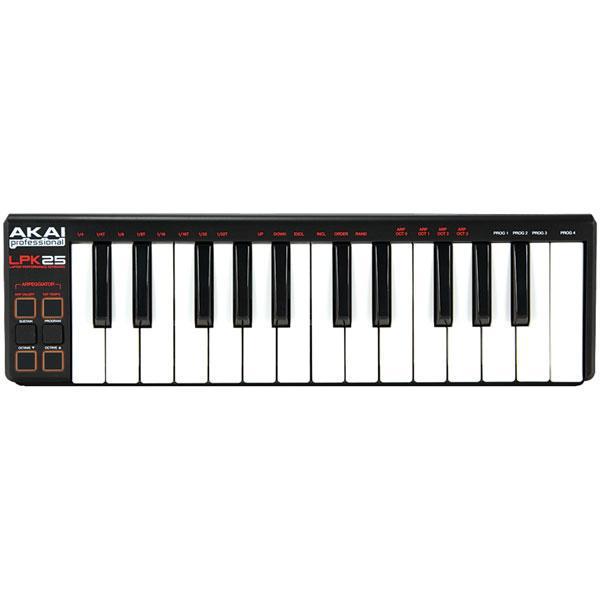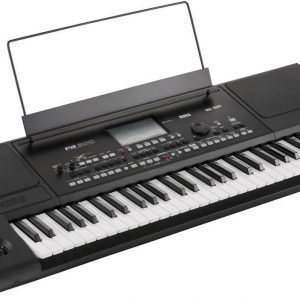Description
The Akai LPK25 MIDI device is a compact and affordable MIDI keyboard controller that is perfect for musicians who are always on the go. With its lightweight and portable design, this MIDI device is ideal for producers, keyboard players, and music enthusiasts who want to create music on the fly.
Designed with the same care and precision that Akai is known for, the LPK25 MIDI device comes equipped with 25 velocity-sensitive mini keys that offer a great feel and response. These keys are perfect for playing melodies, basslines, and chords, and they are perfect for musicians who want to record their ideas quickly and easily.
One of the key features of the Akai LPK25 MIDI device is its versatility. It can be used with Macs, PCs, and other MIDI devices through its USB-MIDI connection. This means that musicians can use it with their favorite software applications such as Ableton Live, Logic Pro, Reason, and Cubase, among others. Additionally, it has a plug-and-play functionality that ensures that the MIDI device works seamlessly with the software application without any additional configuration.
Another great feature of the LPK25 MIDI device is its compact size. Measuring only 13.4 x 3.9 x 1.3 inches and weighing less than a pound, this MIDI device can fit easily in a backpack or laptop bag, making it perfect for musicians who are always on the move. It also comes with a built-in arpeggiator that allows musicians to quickly create arpeggios, chords, and melodies, even if they are not keyboard players.
The LPK25 MIDI device comes bundled with software that makes it easy to get started. It comes with a software editor that allows musicians to customize the device’s settings, assign MIDI values to different controls, and map the controls to their favorite software application. Additionally, it comes with a comprehensive library of virtual instruments, drum kits, and loops that musicians can use to create music right out of the box.
In conclusion, the Akai LPK25 MIDI device is an excellent choice for musicians who want a compact and affordable MIDI keyboard controller that offers great feel and response. With its lightweight and portable design, this MIDI device is perfect for musicians who are always on the move and want to create music anywhere, anytime, and with any device. Whether you are a keyboard player, producer, or music enthusiast, the Akai LPK25 MIDI device is an excellent tool that can help you bring your musical ideas to life.
Akai LPK25 properties
| Product name | LPK25 |
| Brand | Akai |
| Type | Keyboard Instruments |
| Keyboard Instrument | MIDI Keyboard |
| Colour | Black |







Justin White –
I picked up my MIDI keyboard back in January from this shop and I gotta say it’s been a game-changer for my music production setup. The thing that sets it apart is its unique blend of compact size, lightweight design, and feature-rich capabilities.
One of the standout aspects of this keyboard is its 25-key layout, which strikes the perfect balance between portability and functionality. It’s easy to take on the go without sacrificing too much control over my sound. And when I’m in the studio, it’s a breeze to use with my DAW – the keyboard just plugs right in via USB.
From what I’ve seen so far, this keyboard can handle a wide range of MIDI data, including velocity-sensitive keys, aftertouch, and control changes. That’s perfect for triggering sample pads, tweaking effects, or even controlling virtual instruments. The build quality is also top-notch – the keys feel smooth under my fingers, with just the right amount of give.
Another cool feature I’ve discovered is that this keyboard can be easily connected to multiple devices via MIDI over USB and Thunderbolt. No more juggling cables or adapters – it’s all taken care of in one convenient package.
In these uncertain economic times, where companies are raising prices left and right (Apple’s earnings call yesterday was a good reminder that not everything is going up!), this keyboard has been a much-needed respite from the sticker shock. It’s a great example of how innovation can still lead to value without breaking the bank.
Overall, I’d highly recommend this MIDI keyboard to anyone looking for a reliable and versatile companion in their music-making journey.